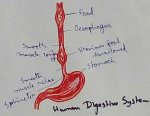Worksheet on Structure of a Fruit
Worksheet on structure of a fruit contains various types of questions.
Remember the important information to the answer the questions given below.
Epicarp: The outer most layer of a fruit.
Mesocarp: The layer, present in between epicarp and endocarp.
Endocarp: The layer, situated below mesocarp and above the seed-coat.
Simple fruit: Fruit, that grows from a single flower.
Aggregate fruit: Large number of ovaries existing independently within a flower grow into this fruit.
Multiple fruit: The single fruit that grows from a cluster of flowers.
I. Select the correct answer and complete the sentence:
(a) After fertilization ovary of a flower transforms into—
(i) seed
(ii) fruit
(iii) bud
(iv) ovule
(b) Seed within a fruit develops from—
(i) ovary
(ii) gynoecium
(iii) ovule
(iv) androecium
(c) A simple dry fruit is—
(i) lichi
(ii) guava
(iii) apple
(iv) ground nut
(d) The fruit which does not have prominent seed is—
(i) apple
(ii) pineapple
(iii) coconut
(iv) water melon
II. Answer in one word:
(i) If the ovule of a flower is damaged, which part of a fruit will not be produced?
(ii) If a flower has many free ovaries, which type of fruit will be developed from it?
(iii) If a flower has a single ovary, which type of fruit will be developed from it?
(iv) What type of fruit does develop when many flowers unitedly grow to from a fruit?
(v) What is the national fruit of India?
(vi) Name a fruit, which does not have a juicy pulp in it?
III. Answer the following questions:
1. Which part of a flowering plant does transform into a fruit?
2. Which part of a flower does develop into seed of a fruit?
3. Which one is the national fruit of India?
4. Which part of mango is edible?
5. Which part of mango do we peel off?
6. Name the third woody layer present under the mesocarp of mango.
7. How many cotyledons are there in a mango seed?
8. Name an aggregate fruit we eat.
9. Name a multiple fruit, which you eat in late summer.
10. Name two fruits, which we eat in green and fresh form.
11. Name a fruit, which you may eat in both ripe and green forms.
12. Name a fruit, which is sweet and juicy when ripe but cooked as a vegetable when it is green.
From Worksheet on Structure of a Fruit to HOME PAGE
Recent Articles
-
Eleventh Grade | Eleventh Grade Science | Eleventh Grade Math
Jun 27, 25 12:26 AM
Eleventh grade biology has been designed in accordance with the recommended topics. We will cover all the topics in biology very exciting and interesting way. -
Explain Digestion of Food | Salivary Glands | Oesophagus | Stomach
Jun 27, 25 12:20 AM
Before the digestion is start by the different enzymes secreted from the different digestive glands food must be turned and chut or mixed with saliva inside the mouth. -
Explain Human Digestive System | Mouth | Tongue | Pharynx | Teeth
Jun 21, 25 01:15 PM
Digestive system is a system of alimentary canal and digestive glands. Alimentary canal- alimentary canal is a tube of variable diameter having muscular wall and glandular epithelial tissues which sta… -
Vernalisation in Plants | Definition | Mechanism | Devernalization |
Jun 18, 25 01:34 PM
Definition of vernalisation- The change of flowering habit due to the low temperature treatment is known as vernalisation. This is a physiological process which was denoted by Clipart in 1857 invite b… -
The Food We Eat | Food we Get from Plants and Animals | Carbohydrates
Jun 15, 25 03:20 PM
What are the food that we should eat? Find out the names of ten food items in the word maze. Write the names in the correct column of the table given below. Food we get from plants Food we get from an…




New! Comments
Have your say about what you just read! Leave me a comment in the box below.